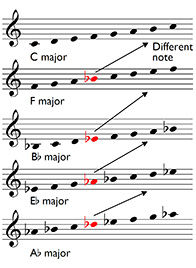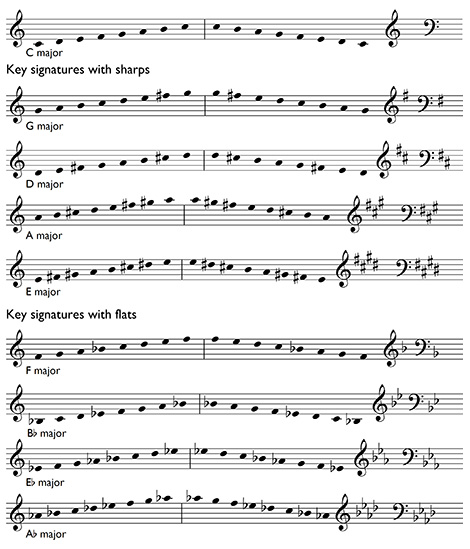5.6 Major scales having key signatures with flats
Example 47 shows the major scales starting on C, F, B♭, E♭ and A♭.
Example 47

Again, as with the group of major scales with sharps in Example 44, there are two points worth noting.
Firstly:
If we compare two scales that lie next to each other in the list, for instance, C major and F major, the only different note in the lower scale is the fourth note.
Both scales contain Cs, Ds, Es and so on, but in F major, we have B♭ (and not B as in C major), and this B♭ is the fourth note up the F major scale. Similarly, the note in B flat major that is different from those in F major is E♭, also the fourth note, and so on.
Secondly:
In each scale, the number of different notes prefaced by flats increases by one each time. C major has none, F major has one note prefaced by a flat, B flat major two, E flat major three and A flat major four.
Example 48 shows the key signatures for these keys.
Example 48

Now that we have discussed the major scales with up to four sharp and four flat key signatures, have a look at the summary chart of these scales and their key signatures in Example 49. Work through this chart at a pace that allows you to pass quickly over those scales that you feel you know, but spend more time over those you are less sure of. Always bear in mind the overriding principle – T T S T T T S.
Example 49

Now try the following two activities that assess your knowledge of key signatures of up to four flats or four sharps, and of the major scales that have these key signatures.
